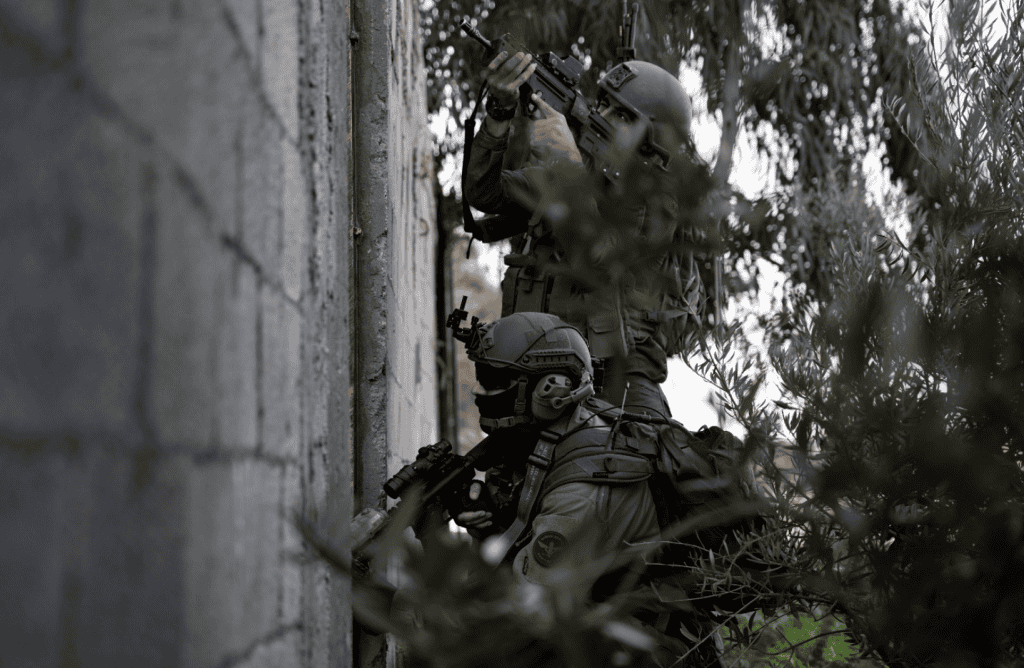
South Africa accused Israel of committing genocide in Gaza at an International Court of Justice hearing at the Hague on January 11. In response, Israel presented its case on January 12, arguing that its actions in Gaza have sought to prevent harm to civilians by evacuating them from areas where fighting has taken place. For instance, Dr. Galit Raguan, Acting Director of the International Justice Division of Israel’s Justice Ministry, said the civilian casualties in Gaza are a tragic outcome of fighting in an urban area and that Hamas exacerbated the casualties by operating among civilians.
Israel Defense Forces Spokesperson Rear Admiral Daniel Hagari emphasized on January 11 that the “IDF’s guiding value is full transparency to the public and the world of verified and relevant information in real-time which is accessible through all media channels and social networks.” His relatively short statement appeared linked to the ongoing case at the Hague. He added: “it is important to remember that we are fighting a just war like no other. A war that the enemy initiated deliberately and consciously when it committed crimes against humanity and cruel acts that have not been seen in the Western world for decades, most of them filmed and documented by the terrorists themselves. And yet, many in the world try to ignore them as if they did not happen. No. They happened. And we remember and will not forget and also will not allow the world to forget – in Gaza, 136 hostages are still held in harsh conditions without medical treatment.”
Israel is continuing to fight in Gaza. Hagari says there are still four Israeli military divisions in Gaza. This includes thousands of infantry in various units, as well as tanks, combat engineers, commandos, paratroops and other forces. Israel has reduced the overall number of forces in Gaza in recent weeks, rotating out many of the reservists who were called up on October 7. Those reservists have now had some time at home after ninety days. They spent three weeks on the border of Gaza in October and then two months fighting inside Gaza, conquering the northern part of Gaza and then working to grind down what was left of Hamas in areas that had been secured by the IDF.
The IDF said on January 12 that “dozens” of terrorists were eliminated in the southern Gaza city of Khan Yunis and also the central Gaza area of Maghazi and Bureij. “In Maghazi, over the past day, IDF troops killed approximately 20 terrorists, including commanders from Hamas’ Nukhba forces,” the IDF said. The Nukhba are considered to be the elite commandos of Hamas, most of whom took part in the October 7 attack on Israel. The IDF also said an airstrike in Khan Yunis eliminated a Nukhba commander. These areas are where active combat is continuing and where the IDF may continue to expand operations. It is also where the IDF continues to find weapons stored by Hamas in civilian areas.
The transition to a new phase of fighting in Gaza, which is supposed to be of much lower intensity than the operations in the first three months of the war, means the number of airstrikes and clashes with Hamas appear to have been reduced. For instance, IDF statements generally refer to several terrorists killed in various incidents in southern and central Gaza. In the area of Maghazi, the IDF said on January 11 that they “identified eight terrorist operatives heading toward a school used for terrorist activity. The terrorists were killed by precise sniper fire.” In many cases, the IDF reports also refer to aircraft or UAVs being used in the strikes targeting threats identified in Gaza.
While airstrikes and drones are used to neutralize the terrorist threats, the IDF says it is continuing to dismantle “hundreds of kilometers of terror tunnels dug underneath the Gaza Strip by the Hamas terror organization.” On January 12, the IDF said that Hamas used 6,000 tons of concrete and 1,800 tons of metal to build the hundreds of tunnels that have been identified. Among the tunnels found in Gaza, the IDF believes they have found a tunnel in Khan Yunis where Israeli hostages were kept. “The tunnel was connected to an extensive underground tunnel network beneath a civilian area in the city. Millions of shekels are estimated to have been invested in excavating the tunnel and equipping it with air ventilation systems, electrical supply and plumbing. After investigating the tunnel, it can be confirmed that Israeli hostages had been inside the tunnel,” the IDF said.







